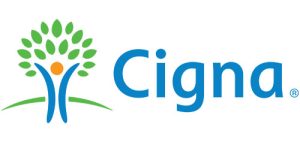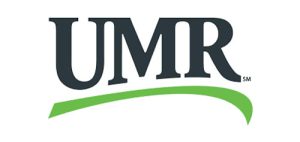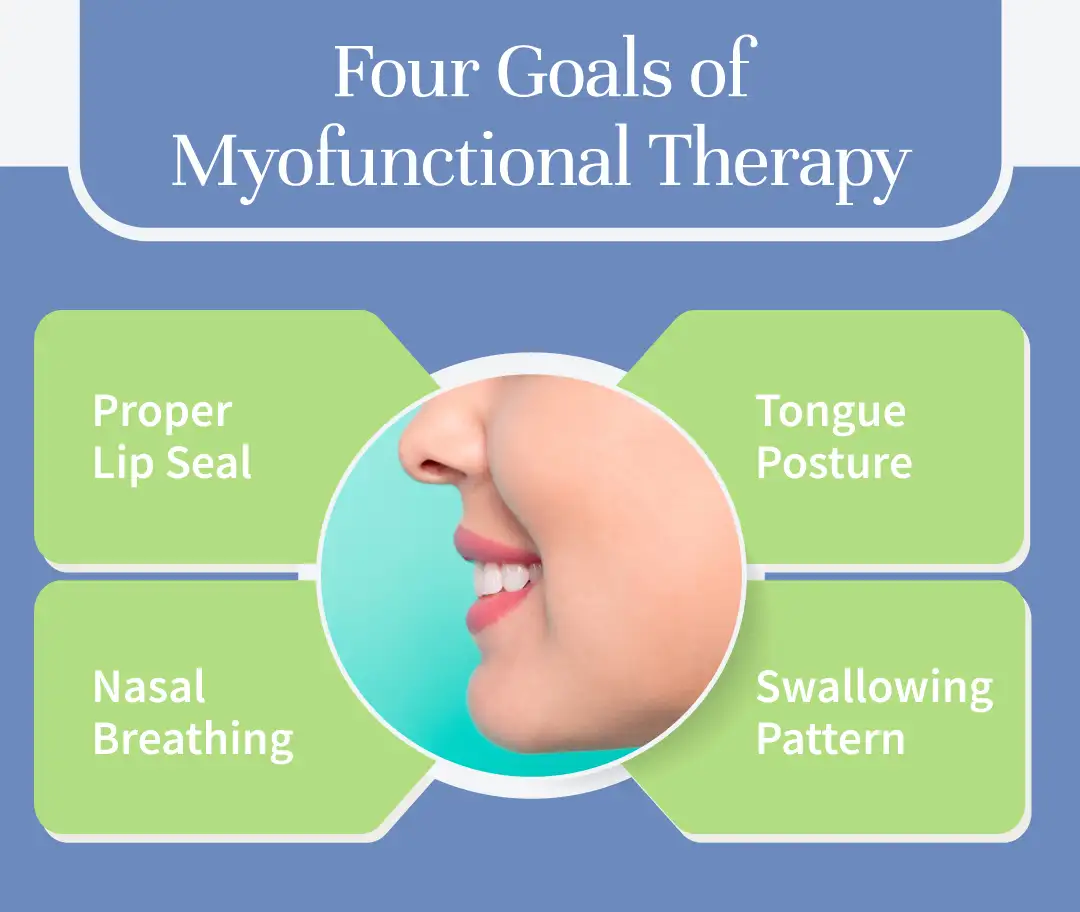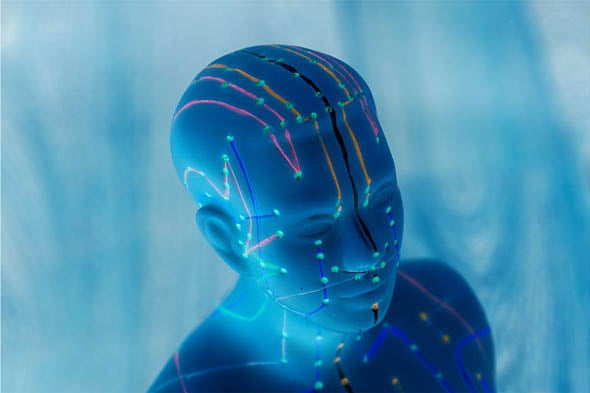
Learn How
Myofunctional Therapy
Can Help You
Fill Out the Form to Schedule Your
Consultation
We accept most insurance!
















Myofunctional Therapy in The Greater Milwaukee Area
If you are not sleeping, breathing, and chewing well, it's physically impossible to be optimally healthy! No matter what your age, you can train your oral-facial and neck muscles to help you improve sleep, breathing, and digestion.
Myofunctional therapy is a painless, highly effective way to balance the muscles and joints in your face. It is a program of exercises that help restore strength and coordination, retraining muscles of the face and tongue. This optimizes complex functions such as breathing, chewing, swallowing, speaking, occlusion, temporomandibular joint movement, oxygen flow to vital organs, oral hygiene, stability of orthodontic treatment, facial esthetics, and facial skeletal growth. Orofacial Myofunctional Therapy (OMT) creates positive habits to ensure those changes last a lifetime.
At Advanced Sleep and TMJ Solutions, our oral healthcare specialists are trained in myofunctional therapy awareness., This enables Dr. Connor’s team to alert her for proper diagnosis and allows you to get relief quickly for optimal results. If you are interested in myofunctional therapy, we encourage you to learn more by reading the information on this page, or by contacting the practice directly for more information.
- Myofunctional Therapy Benefits
- Candidates for Myofunctional Therapy
- Why Choose Advanced Sleep and TMJ Solutions
- Myofunctional Therapy Process
- How Long Therapy Takes
- Functional Frenectomy


The Major Benefits of Myofunctional Therapy?
Poor oral behaviors, also known as orofacial myofunctional disorders (OMDs), are found to be the main cause of various health concerns and orthodontic issues. An OMD is an oral-motor dysfunction, which can be worsened by improper swallowing and breathing through the mouth. A child may also suck their thumb and habitually bite their nails. Through special myofunctional therapy exercises and treatment plans, it may be possible to fix these and other symptoms of tooth misalignment, crowding, or improper jaw development.
Myofunctional therapy can help you to regain your enjoyment of life again, including taking care of simple tasks like eating, sleeping, and talking easily. Common complaints we see are TMJ dysfunction and obstructive sleep apnea. Our patients have experienced a reduction in symptoms after therapy. As an added beauty benefit, these exercises will reduce the puffiness and wrinkles on your face as well. In fact, it has been reported that many plastic surgeons in Brazil work with orofacial myotherapists to get the best cosmetic results for their patients.
Myofunctional Therapy vs. Orthodontics
Orthodontic treatment usually starts when all permanent teeth have grown in, and at this point, teeth may be extracted and braces used to straighten the teeth. While this approach is the most effective way to straighten teeth, it doesn't always address the underlying cause of an orthodontic concern. This might lead to a lack of permanent results without the help of retainers. Some specialists believe that myofunctional therapy is an effective approach to managing early childhood dental habits. It should be used to pinpoint these habits before they become bad enough to cause future difficulties with your child’s teeth or jaw.

Who Needs Myofunctional Therapy?
- Is your child a picky eater?
- Do you have chronic jaw pain?
- Are you frustrated that speech therapy has not fixed the problem?
- Has your child been diagnosed with a disorder such as Apraxia?
- Has your dentist pointed out an overbite caused by “tongue thrust”?
- Does your infant have difficulty feeding?


Children & Adults with Orofacial Myofunctional Disorders May Struggle With
- Mouth breathing
- Bottle feeding
- Thumb, finger, & pacifier sucking
- Long Face Syndrome
- Tongue thrusting
- Tongue Tie
- Reverse swallow
- Lisping / speech issues
- Poor posture / leaning on chin
- Cheek or lip biting
- Lips not remaining sealed
- Picky/messy eating
- Choking when eating
- Snoring/sleep issues
- Crowded teeth
- Grinding, clenching, bruxism
- Nasal congestion
- Allergies
- Jaw pain
- Headaches
- Orthodontic relapse
Why Choose Advanced Sleep and TMJ Solutions for Myofunctional Therapy?
Myofunctional therapy at Advanced Sleep and TMJ Solutions conducted by Dr. Connor’s Myofunctional Team can hold virtual Skype sessions throughout the course of therapy, making treatment more convenient and accessible. In addition, for individuals suffering from sleep apnea and/or snoring, myofunctional therapy is a key part of treating the root cause of these serious health issues. Having the whole team under one roof overseen by Dr. Connor will give you the confidence that you are on the path to living a more pain-free and healthy life.
What is the Myofunctional Therapy Process Like?
We customize your treatment to your schedule and your unique needs. Myofunctional therapy consists of specific oral and facial exercises designed to address the improper myofunctional habits that cause orthodontic and/or breathing issues. Patients should perform these exercises regularly to help develop healthier habits and realign the jaw muscles, which can ultimately aid in the ability to maintain a better oral posture, breathe through the nose, swallow properly, and more. Some people may need an oral appliance to help train their tongue and jaw. Additionally, certain patients may need clear aligners for a short period of time after myofunctional therapy has been completed.
During the span of treatment, periodic “check-in” visits are typically scheduled with Dr. Connor to ensure everything is progressing as planned. For those who do not live locally, she can conduct these appointments via Skype.

How Long Does Myofunctional Therapy Take?
The myofunctional therapy process usually takes about six months to complete for most patients, though the exact timeframe varies depending on how severe the issue is, exercises must also be performed as directed by the patient, with parents/caregivers helping their children complete exercises accordingly.
What is a Functional Frenectomy?
One common cause of orofacial dysfunction is constraints in the mouth caused by attachments, like a frenum. These attachments may be found between your upper lip & gums and beneath the tongue, as well as near your lower lip. The two types of frena, the labial, and lingual types can result in a range of physiological symptoms that affect a patient's quality of life.
The labial frenulum is a muscle that extends from the bottom lip up to the top. It can be either superior or inferior and connects the gums with either the upper or lower lip respectively. A lingual frenulum is a small piece of skin that connects the tongue to the floor at the back of your mouth. These oral soft tissues are responsible for a whole bunch of different things, from the way your jaw (and body) look to how well you breathe. They can even correlate to problems like back pain! If you have a tight frenum, you may experience large gaps between your front teeth, gum recession, problems with eating and speaking, and even shoulder and neck pain.
To address these concerns, a frenectomy can be performed to release the muscular attachment(s) from the gums. This procedure is commonly used in many situations, such as:
- When the lingual frenulum is inhibiting proper eating or speaking function
- In the event that oral restrictions are causing discomfort, pain, or tension
- When optimal orofacial function is inhibited by a restrictive frenulum

Dr. Connor will diagnose if you need a functional frenectomy and will be able to tell you whether you are experiencing symptoms due to significant frenal restraint. A frenectomy can improve how patients live their life and alleviate other problems. It will help them with various advancements in health such as improved posture, eased breathing, easier biting, etc. In order to help your frenectomy last, myofunctional therapy before and after is essential. It helps to get your tongue and lips back in shape and should be part of the procedure. With this comprehensive approach—considered an osteopathically-guided functional frenectomy—patients can restore the full integrity of their orofacial structures, recover their physiological wellness, and improve their quality of life.
Contact Advanced Sleep and TMJ Solutions Today
If you have any questions about Myofunctional Therapy or would like to learn about your treatment options, schedule an appointment by filling out the form, or call us at
(262) 400-3185 today.